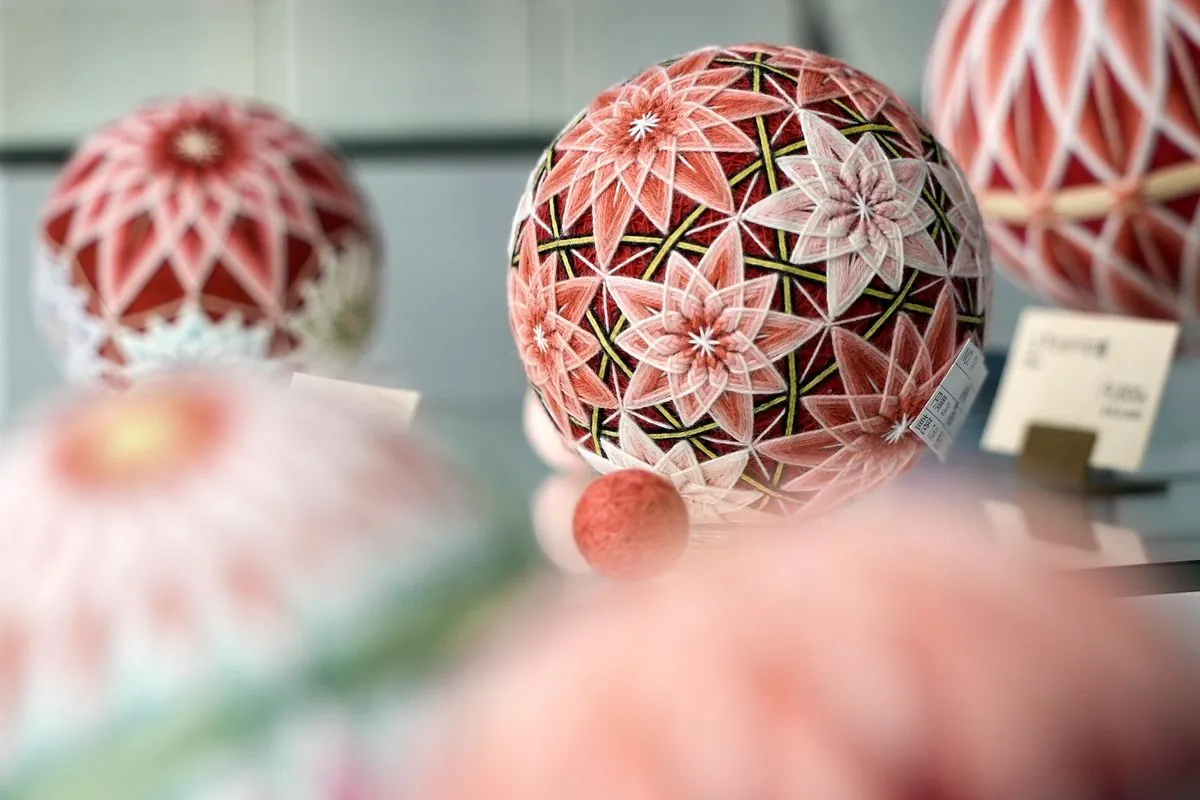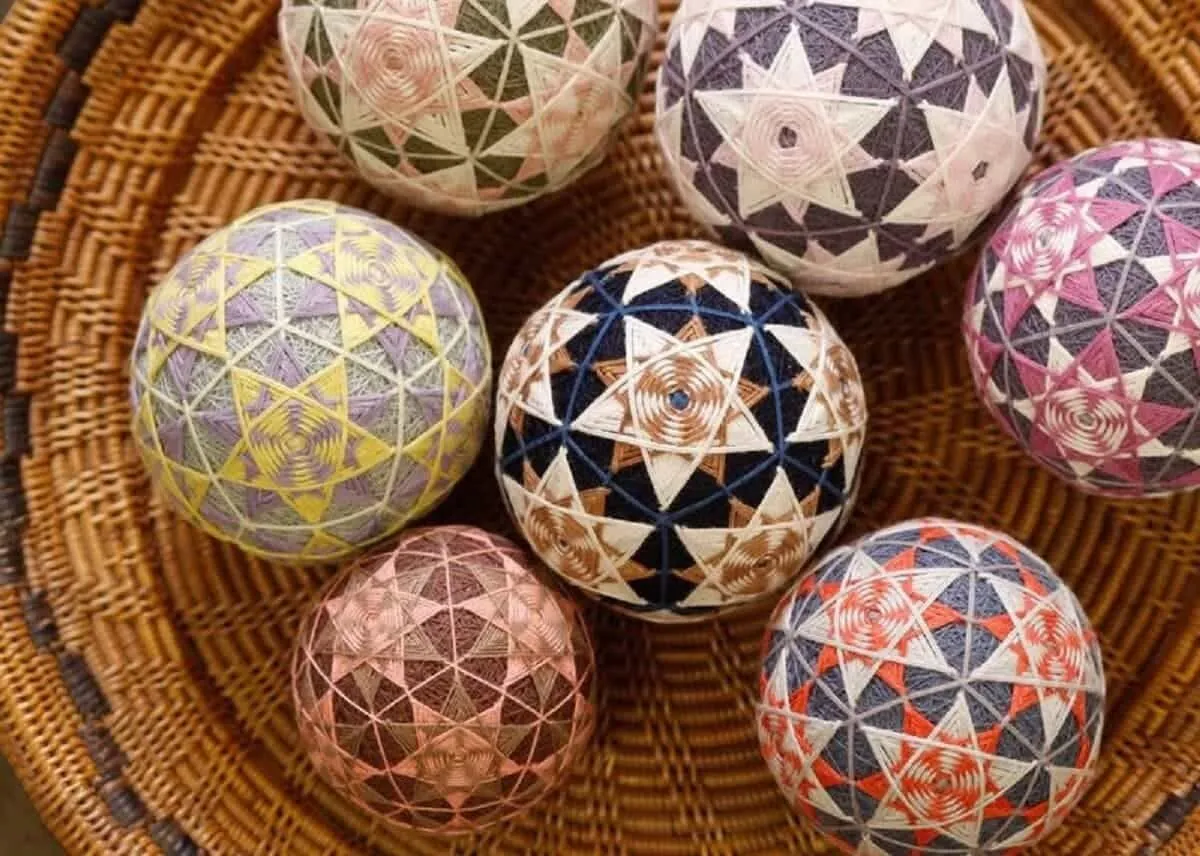Ancient Japanese Art of Temari: Stitching Tradition into Modern Times
In Shikoku, Japan, artisans preserve the 1000-year-old craft of Sanuki Kagari Temari. These intricate, hand-stitched balls, once toys for nobility, now serve as cherished heirlooms and modern decorations.

In the quiet town of Kawaramachi, Japan, a group of women gather to practice an art form that has endured for over a millennium. They are the guardians of Sanuki Kagari Temari, a craft that transforms simple cotton threads into exquisite spherical masterpieces.
At the heart of this circle sits Eiko Araki, a master of the temari tradition. Her skilled hands guide the creation of these kaleidoscopic orbs, each one a testament to patience and precision. The word "temari" literally translates to "hand ball" in Japanese, but these are far from ordinary playthings.

Temari balls are works of art, adorned with intricate geometric patterns bearing poetic names like "firefly flowers" and "layered stars." These designs often carry symbolic meanings, reflecting elements of nature or complex mathematical shapes. The creation of a single temari can span weeks or even months, with some fetching prices in the hundreds of dollars.
The craft of temari has a rich history, originating in China before making its way to Japan around the 7th century. Initially, these balls were toys for noble children, crafted from silk scraps leftover from kimono-making. Over time, they evolved into decorative objects and gifts believed to bring good fortune.
The process of creating temari is as fascinating as the end result. In Araki's studio, which doubles as the headquarters for the temari preservation society, a rainbow of 140 cotton thread hues awaits. These colors are painstakingly dyed by hand using natural ingredients. Plants, flowers, and even insects like the cochineal bug contribute to the vibrant palette.
The core of each temari is formed from cooked and dried rice husks, carefully wrapped in cotton and thread until a perfect sphere emerges. This becomes the canvas for the intricate stitching that follows. The artisans use guiding lines, akin to latitude and longitude on a globe, to ensure precise and even patterns.
In recent years, temari has garnered renewed interest both within Japan and internationally. Caroline Kennedy, during her tenure as U.S. Ambassador to Japan about a decade ago, took lessons in this ancient art form. This resurgence has inspired artisans like Araki to adapt temari for modern tastes while preserving its traditional essence.
Araki has introduced innovative designs that bridge the gap between past and present. Her creations include temari-inspired Christmas ornaments and miniature balls attached to straps, making this art form more accessible to everyday life. She's even developed a cluster of pastel balls that open and close with tiny magnets, serving as an aromatic diffuser when filled with herbs.
"Out of nothing, something this beautiful is born, bringing joy. I want it to be remembered there are beautiful things in this world that can only be made by hand."
Despite its growing popularity, the preservation of temari faces significant challenges. The craft demands unwavering dedication, with training typically spanning over a decade. Today, only a few dozen women possess the skills to create temari to traditional standards.
As temari evolves, it continues to captivate with its blend of mathematical precision and artistic beauty. From its origins as a noble plaything to its current status as a cherished art form, temari embodies the Japanese appreciation for impractical beauty and meticulous craftsmanship. In a world of mass production, these hand-stitched spheres serve as a reminder of the enduring value of human touch and tradition.


































